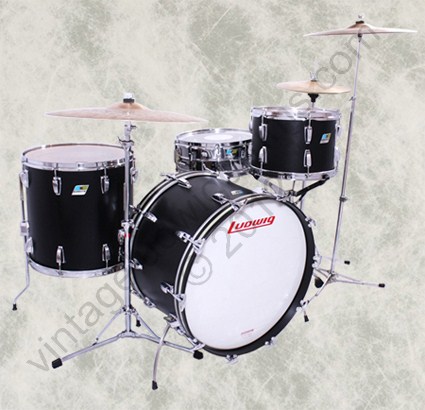
 The Ludwig Classic configurations didn’t change much in the 1970’s. The more notable changes to Classic drums were present in the drum design that would include finishes, shell hardware, sizes, and shell construction. New plastic wraps offered drums a look to keep up with evolving look of the 1970’s. The shell hardware had advanced in design. The upgrades were geared towards durability. Drummers were now hitting harder and touring tougher. Ludwig had to design their new era Classic kits to hold up those conditions.
The Ludwig Classic configurations didn’t change much in the 1970’s. The more notable changes to Classic drums were present in the drum design that would include finishes, shell hardware, sizes, and shell construction. New plastic wraps offered drums a look to keep up with evolving look of the 1970’s. The shell hardware had advanced in design. The upgrades were geared towards durability. Drummers were now hitting harder and touring tougher. Ludwig had to design their new era Classic kits to hold up those conditions.Bass drum spurs and stands were of the significant upgrades to their outfits. The Atlas series drum stands were introduced to accompany all drum sets. First generation 5/16” Curved retracting spurs became a significant upgrade in drum sets that helped bass drums stay pivoted and stiff to the attack of the kick beater. The popularity to bigger drums sizes gave way. Bigger size drums offered drummers a way to remain a present force in music groups. The volume at which accompanying musicians played along to increased to deafening ranges. Larger 24” and 26” kick drums became more common in configurations. Bigger size drums offered the volume and presence to accompany walls of blasting guitar cabinets.
The early 1970’s shells were designed as a 3-ply drum consisting of an outer and inner maple ply supported by an inner poplar ply. This was the shell design that came to be in ’67. The characteristics of maple offered more volume, a brighter tone, and tuning versatility. The inside of shells was finished as a clear interior for the early part of the 1970’s. Shells were later finished with granitone paint for “sound enhancement”. The design of shells then changed from 3-ply to a 6-ply layout with no reinforcement rings and back to a clear interior by 1976. These shells became stronger, louder, and offered a cheaper way in producing shells.
